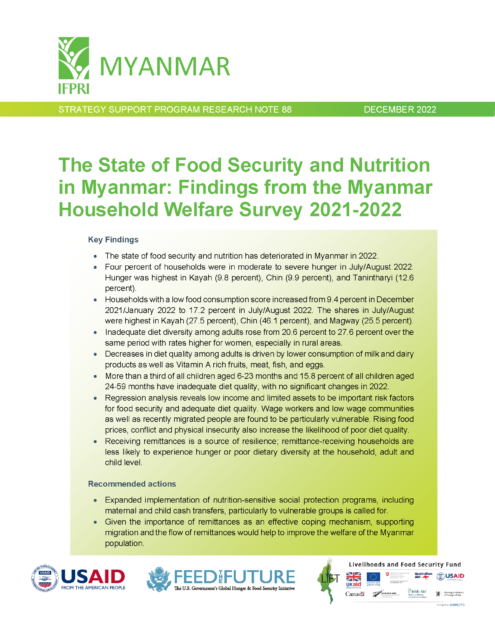The State of Food Security and Nutrition in Myanmar: Findings from the Myanmar Household Welfare Survey 2021-2022

In this research note, we provide an overview of the state of food security and nutrition in Myanmar using a recently collected household dataset. We examine food security using a household hunger scale and a food consumption score. To examine the state of nutrition, we examine the diet quality of individuals across Myanmar for three separate but important sections of population: (1) adults (18+ years), (2) women of reproductive age (15-49 years), and (3) children (6-23 and 6-59 months). We explore these indicators using three rounds of the Myanmar Household Welfare Survey (MHWS) collected over the phone in the first three quarters of 2022 – hereafter Q1, Q2 and Q3 – among over 12,000 households in 310 townships of Myanmar. MWHS is a nationally, urban/rural and state/region representative phone survey (MAPSA 2022a). We use standard food security and diet diversity measures for each of the three subpopulations to examine trends over the three rounds as well as explore heterogeneity with respect to gender, location of residence, and asset and income-based welfare indicators. We also look at disaggregated consumption of the different food groups that constitute the diet diversity measures to investigate the change in the consumption pattern of individuals. Finally, we use regression analysis to look at predictors of food insecurity and inadequate diet diversity, including household wealth and income, self-reported shocks, food prices, and household characteristics.


